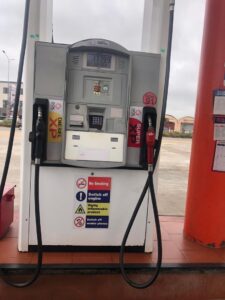Majority of Drivers Unaware of Fuel Pump Nozzle Colors — A Call for Nationwide Education
 Filling your vehicle with the wrong type of fuel whether petrol in a diesel engine or diesel in a petrol engine can cause serious and costly damage. To help prevent such mistakes, fuel pumps use different colored nozzles to distinguish between fuel types. Typically, red nozzles indicate petrol while green or black nozzles indicate diesel.
Filling your vehicle with the wrong type of fuel whether petrol in a diesel engine or diesel in a petrol engine can cause serious and costly damage. To help prevent such mistakes, fuel pumps use different colored nozzles to distinguish between fuel types. Typically, red nozzles indicate petrol while green or black nozzles indicate diesel.
These color codes are essential not only for the pump attendants but also for vehicle owners and drivers. Unfortunately, a recent street interview conducted by mrwoode.com revealed a concerning reality: 80% of drivers do not know the meaning of these nozzle colors, 10% have never noticed the colors at all, and only 10% understand their significance.
Using the wrong fuel in your vehicle can lead to serious mechanical issues. Here’s what happens in each scenario:
1. Diesel in a Petrol Car Diesel added to a petrol engine
Petrol engines use spark plugs to ignite fuel.
Diesel is heavier, oily, and doesn’t evaporate like petrol.
The engine likely won’t start if a large amount of diesel is added.
If it does start, it will misfire, produce smoke, and eventually stall.
Potential damage:
Spark plugs and fuel system components (like injectors and filters) can get fouled.
Long-term use may damage the catalytic converter or clog the fuel system.
2. Petrol in a Diesel Car (Petrol added to a diesel engine)
This is a more serious mistake than the one above.
Diesel engines rely on the fuel for lubrication, especially in high-pressure pumps and injectors.
Petrol acts as a solvent and strips away lubrication.
Even a small amount (5–10%) of petrol can lead to metal-on-metal contact.
Potential damage:
Fuel pump failure
Injector damage
Severe wear or failure of engine internals
This growing lack of awareness among drivers poses a risk not just to individual vehicles but to road safety and the environment. It is high time that Oil Marketing Companies (OMCs) and the National Petroleum Authority (NPA) collaborate to educate the general public.
Awareness campaigns through media, fuel stations, and driving schools can go a long way in reducing the rate of misfuelling. Clear signage, staff training, and even color-coded educational materials can help drivers make informed decisions.
With most drivers unaware of the basic meaning of fuel nozzle colors, the risk of misfuelling remains high. A joint effort by stakeholders in the petroleum sector is needed to educate both drivers and the general public. Let’s prevent unnecessary damage, save costs, and promote safer roads through simple, effective public education.
